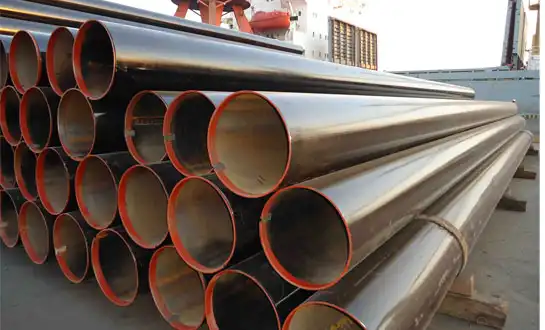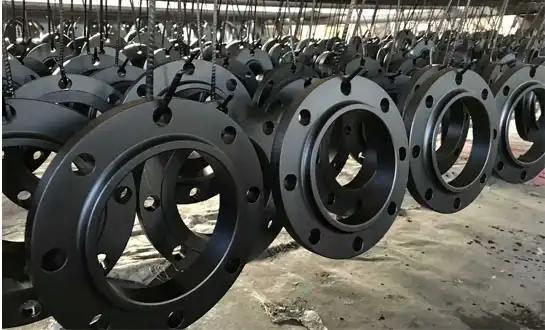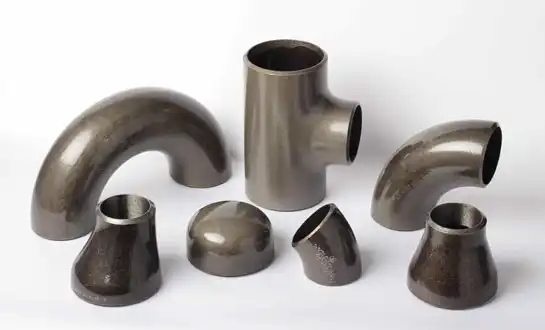Why LNG Plants Require Specialized Cryogenic Piping Systems?
Liquefied natural gas facilities operate under extreme conditions that push conventional piping materials and designs beyond their operational limits, necessitating specialized engineering solutions for safe and efficient operations. Cryogenic piping systems in LNG plants must withstand temperatures plummeting to minus 162 degrees Celsius while maintaining structural integrity, preventing thermal losses, and ensuring leak-free performance throughout decades of service. The unique challenges posed by handling super-cooled liquefied gas demand materials with exceptional low-temperature toughness, insulation systems that minimize boil-off losses, and expansion compensation mechanisms addressing massive thermal contractions. Standard carbon steel piping suitable for ambient temperature applications becomes dangerously brittle at cryogenic conditions, potentially leading to catastrophic failures if incorrectly specified. This article examines the technical, safety, and operational reasons why LNG facilities invest substantially in purpose-engineered cryogenic piping rather than adapting conventional systems.
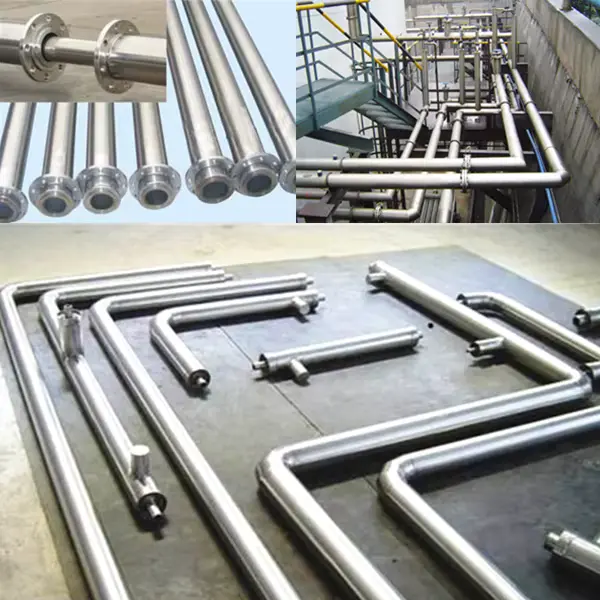
Material Challenges at Extreme Low Temperatures
Brittle Fracture Prevention in Cryogenic Service
The fundamental reason LNG plants require specialized cryogenic piping stems from dramatic property changes occurring in most structural materials when cooled to liquefied natural gas temperatures. Carbon steel undergoes a ductile-to-brittle transition at temperatures well above cryogenic ranges, losing its ability to absorb energy through plastic deformation before fracturing. This transformation creates catastrophic failure risks where minor impacts or thermal shocks could trigger brittle cracks propagating through piping networks. Specialized cryogenic piping materials including austenitic stainless steels, aluminum alloys, and nickel steels maintain face-centered cubic crystal structures that resist brittle fracture mechanisms even at minus 162 degrees Celsius. The selection process evaluates Charpy V-notch impact test results at design temperatures, ensuring materials retain adequate toughness margins. LNG plant designers cannot compromise on material specifications since the consequences of brittle fracture include massive product releases, potential vapor cloud explosions, and extensive facility damage.
Thermal Contraction and Dimensional Stability
Cryogenic piping in LNG plants experiences thermal contractions exceeding 200 millimeters per 100 meters of pipe length when cooled from ambient installation temperatures to operating conditions, creating enormous stresses unless properly accommodated. This dimensional change dwarfs thermal movements in conventional piping systems, demanding sophisticated expansion joint arrangements, flexible routing configurations, and carefully engineered support systems. The coefficient of thermal expansion for austenitic stainless steels produces substantial dimensional changes across temperature ranges encountered in LNG facilities. Designers must account for differential thermal contractions between cryogenic piping and surrounding structural steel supports that remain at ambient temperatures, preventing binding conditions that could overstress components. Cooldown procedures for cryogenic piping systems follow carefully controlled rates that manage thermal gradient stresses, avoiding shock cooling that could cause component distortion or connection leakage.
Weldability and Fabrication Complexity
Fabrication of cryogenic piping demands specialized welding procedures, qualified welders, and rigorous inspection protocols far exceeding requirements for standard carbon steel systems. Austenitic stainless steel welding requires careful heat input control, interpass temperature management, and filler metal selection that maintains corrosion resistance and low-temperature toughness in completed joints. Non-destructive examination of cryogenic piping welds employs radiography, ultrasonic testing, and liquid penetrant methods detecting defects that might propagate under thermal cycling stresses or impact loads during service. The qualification programs for welding procedures and welder performance in cryogenic piping applications verify that completed joints meet stringent toughness, ductility, and soundness requirements through destructive testing of production samples.
Thermal Management and Energy Efficiency Requirements
Minimizing Boil-Off Through Superior Insulation
Economic viability of LNG plants depends critically on minimizing product losses through boil-off caused by heat leak into cryogenic piping systems, making thermal insulation performance a paramount design consideration. Every watt of heat entering cryogenic piping converts approximately three grams of LNG per hour into vapor, representing lost product value and creating vapor handling challenges. Multi-layer vacuum insulation surrounding cryogenic piping achieves thermal conductivities approaching theoretical limits by eliminating gaseous conduction and convection through high-vacuum spaces between concentric pipes. The capital cost premium for vacuum-insulated cryogenic piping systems pays back through reduced boil-off losses within months or years depending on LNG values and facility utilization rates. Alternative insulation approaches including cellular glass and perlite serve cryogenic piping applications where vacuum systems prove impractical, though with higher heat leak rates. Cold box designs enclosing multiple cryogenic piping circuits within insulated enclosures simplify construction and improve overall thermal performance.
Managing Phase Changes and Pressure Surges
Cryogenic piping systems in LNG plants face unique operational challenges managing liquid-vapor phase transitions that create pressure surges, flow instabilities, and potential water hammer events requiring specialized design considerations. Two-phase flow conditions during cooldown, warmup, or partial loading operations generate complex flow patterns including stratification, slugging, and entrainment that influence pressure drop calculations. Vapor locking in cryogenic piping occurs when residual gas pockets prevent liquid flow advancement, necessitating venting provisions and controlled filling procedures. Thermal stratification in horizontal cryogenic piping creates temperature gradients between liquid and vapor phases that induce thermal stresses and affect expansion calculations. Emergency depressurization of cryogenic piping generates rapid vaporization with enormous volumetric expansion creating pressure waves that could damage components unless relief capacity proves adequate.
Support System Design for Moving Pipe
Cryogenic piping support systems must accommodate thermal movements while preventing excessive loads on connected equipment, requiring specialized designs unavailable in standard piping component catalogs. Sliding supports employ materials maintaining low friction coefficients at cryogenic temperatures including Teflon or stainless steel combinations that permit movement without binding. Spring hangers and constant support devices maintain consistent vertical reactions despite thermal elevation changes in cryogenic piping, protecting pump suction nozzles and heat exchanger tubes from excessive forces. Cold support designs minimize heat leak into cryogenic piping by limiting conductive paths through support members. Anchors and directional guides control thermal movement patterns, ensuring expansions occur along intended paths that maintain clearances with adjacent equipment and structures.
Safety and Operational Reliability Considerations
Leak Detection and Emergency Response
Specialized leak detection systems for cryogenic piping employ technologies including methane sensors, temperature monitoring, and acoustic emission analysis identifying small releases before they escalate into major incidents. The formation of visible vapor clouds when cryogenic liquids contact humid air provides obvious visual indication of leaks but demands immediate response protocols protecting personnel from cold burns and asphyxiation hazards. Spill containment systems beneath cryogenic piping prevent cryogenic liquid contact with structural steel members that could undergo brittle fracture. Emergency isolation valves positioned strategically throughout cryogenic piping networks enable rapid sectioning of leaking segments, limiting product loss and confining hazardous releases.
Regulatory Compliance and Standards
LNG facilities must design, fabricate, and inspect cryogenic piping according to strict codes including ASME B31.3, API standards, and international regulations addressing unique hazards of liquefied gas handling. Classification societies and regulatory authorities mandate third-party review of cryogenic piping designs, ensuring qualified engineers verify stress analyses, material selections, and safety provisions. Documentation requirements for cryogenic piping projects exceed conventional systems, demanding complete material traceability, qualified procedure records, and inspection reports demonstrating code compliance.
Long-Term Durability and Maintenance
Cryogenic piping systems properly designed and maintained provide decades of reliable service, though thermal cycling and operational transients gradually degrade components requiring monitoring and replacement. Thermal fatigue from repeated cooldown and warmup cycles progressively damages cryogenic piping through crack initiation requiring periodic inspection. Insulation system degradation through moisture ingress or vacuum loss increases heat leak and boil-off rates, justifying infrared thermography surveys identifying degraded sections. Planned maintenance programs balance component replacement costs against failure risks, employing risk-based inspection allocating resources toward highest-consequence cryogenic piping circuits.
Conclusion
LNG plants require specialized cryogenic piping factory systems because conventional materials fail catastrophically at minus 162 degrees Celsius, thermal contractions create enormous stresses, and boil-off losses demand superior insulation. The combination of material science challenges, thermal management requirements, and safety considerations necessitates purpose-engineered solutions. Investment in proper cryogenic piping systems ensures safe, efficient operations throughout decades of facility service life.
HEBEI RAYOUNG PIPELINE: Supporting Industrial Infrastructure Beyond Cryogenic Applications
While LNG facilities demand specialized cryogenic piping for ultra-low temperature service, HEBEI RAYOUNG PIPELINE TECHNOLOGY CO., LTD. provides essential industrial piping components supporting ambient and moderate temperature systems throughout these complex plants. We supply diverse industrial pipe fittings, including buttweld carbon steel elbows, tees, reducers, and pipe flanges, which ensure secure connection points for utility systems and process auxiliaries operating outside cryogenic piping zones. Our product lineup includes solutions for all design requirements ranging from straight lines through complex angles to flexible joints, serving water systems, compressed air networks, and fuel gas distribution at LNG facilities. With GOST-R and SGS certifications validating export compliance and ISO 9001:2015 quality management ensuring consistent manufacturing standards, we deliver the reliability industrial projects demand. As leading pipes and fittings manufacturers, we understand that comprehensive facility construction requires both specialized cryogenic piping and conventional carbon steel systems working together seamlessly. Contact our engineering team at info@hb-steel.com to discuss how our industrial piping components complement your facility's specialized systems with proven quality.
References
1. Barron, R.F. (2023). Cryogenic Systems Engineering: Materials and Design for Low Temperature Applications. McGraw-Hill Professional, Fourth Edition.
2. American Society of Mechanical Engineers. (2024). ASME B31.3 Process Piping Code: Chapter VI - Special Requirements for Cryogenic Piping Systems. ASME Standards Publication.
3. Timmerhaus, K.D. & Flynn, T.M. (2023). Cryogenic Process Engineering for LNG Facilities: Design Principles and Safety Considerations. Springer International Publishing.
4. Mokhatab, S. & Poe, W.A. (2024). Handbook of Natural Gas Transmission and Processing: Cryogenic Systems and Equipment Design. Gulf Professional Publishing, Fifth Edition.
5. European Industrial Gases Association. (2023). EIGA Standards for Cryogenic Piping: Material Selection and Installation Guidelines. EIGA Technical Documentation Series.
6. National Fire Protection Association. (2024). NFPA 59A: Standard for Production, Storage and Handling of Liquefied Natural Gas. NFPA Publications.

Need a quote? Want to see samples? Just say hello. We’re friendly. We’re fast. And we’re ready when you are.
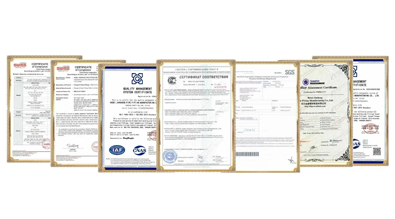
Welcome to RAYOUNG – Strong Pipes, Stronger Promise
